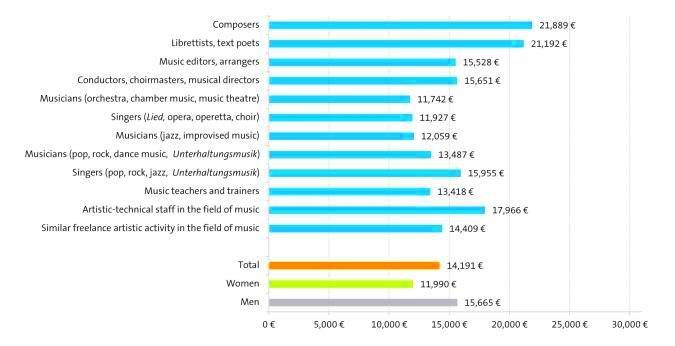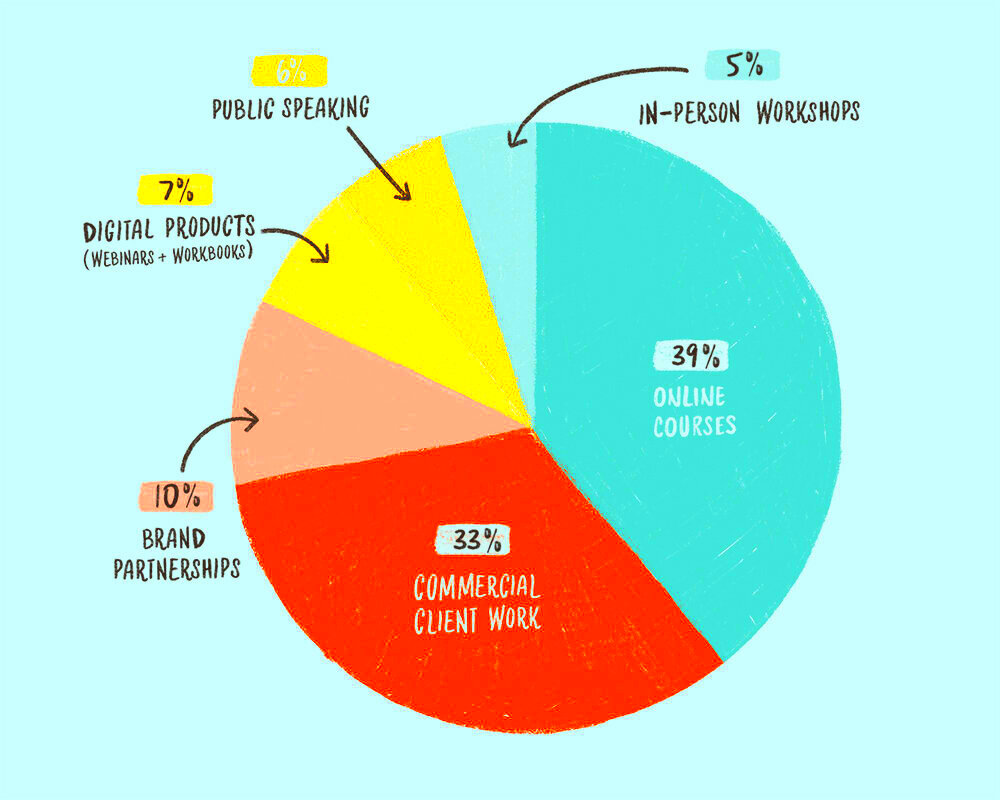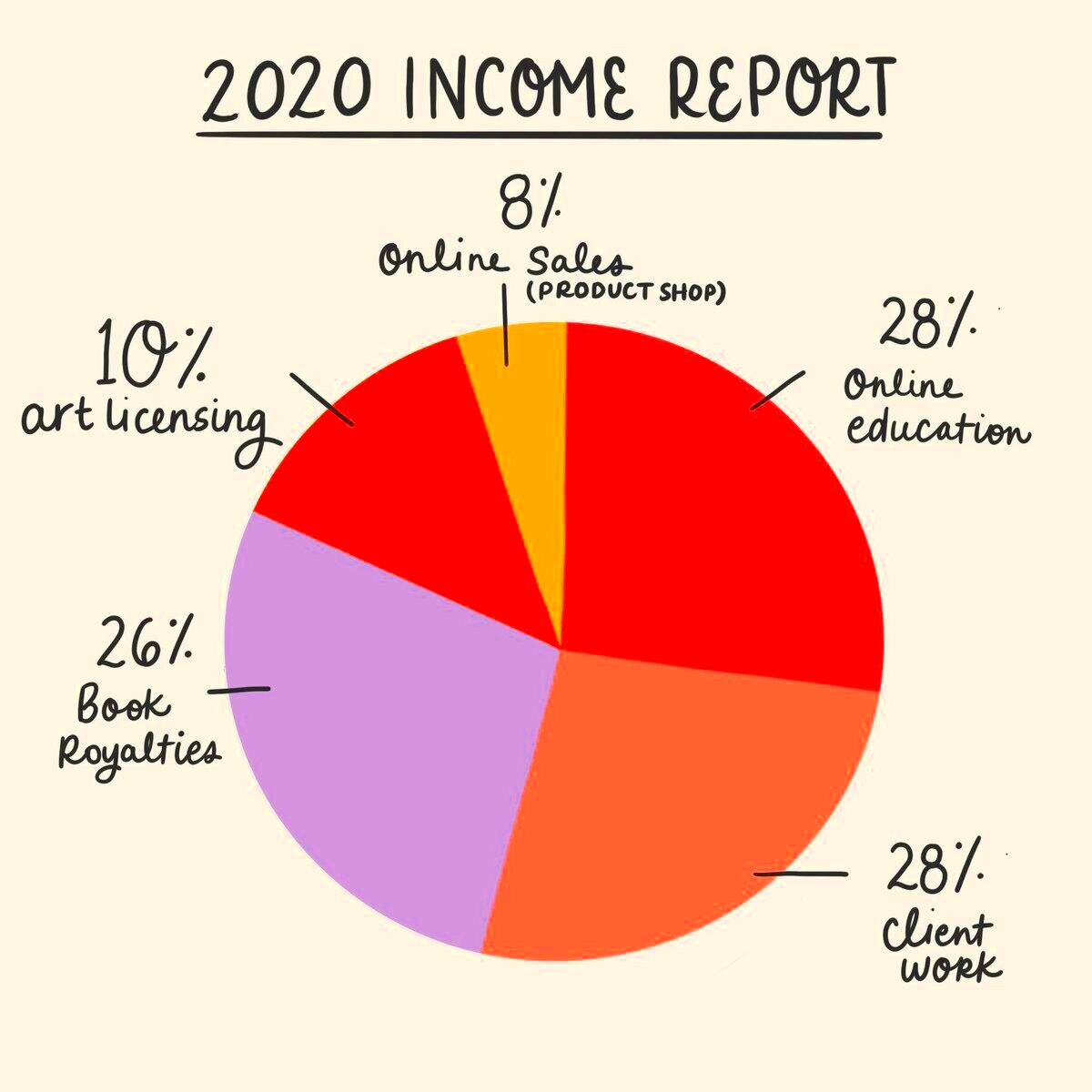Freelance artists have the freedom to work on their terms, but with that freedom comes the challenge of determining how much they can earn. Unlike traditional jobs with set salaries, freelance artists face income variability depending on multiple factors like skill level, demand, and client base. Understanding how to manage and grow earnings is essential for maintaining a steady income in the freelance world. In this section, we'll dive into the elements that influence earnings and how artists can work towards increasing their income potential.
Factors That Influence Freelance Artists Earnings

Several factors play a role in determining how much a freelance artist can earn. It’s important to be aware of these variables so that you can make informed decisions and grow your business.
- Skill and Experience: The more skilled and experienced an artist is, the more they can charge for their services. Higher-quality work is often associated with higher rates.
- Specialization: Artists who specialize in specific niches (e.g., portrait painting, digital art, or animation) can often charge more for their expertise.
- Client Type: Working with large corporations or established brands often results in higher pay compared to smaller or personal clients.
- Demand and Market Trends: The level of demand for certain styles or mediums at any given time can influence earnings. Trends in design, art styles, or commercial demand shift over time.
- Location: While being a freelancer offers flexibility, living in areas with high living costs may impact how much you charge and earn.
Also Read This: How to Contact a Buyer on Fiverr
How to Estimate Your Freelance Earnings

Estimating your freelance earnings can be tricky, especially when you're just starting out. However, there are methods you can use to make an educated guess and ensure you’re charging what you're worth. Here's a simple process for estimating your freelance earnings:
- Hourly Rate: Calculate your hourly rate by considering your skill level, industry standards, and the complexity of the work. Multiply your hourly rate by the number of hours you plan to work each week to estimate your income.
- Project-Based Fees: Many artists prefer charging a fixed fee for a project. Determine the time and effort needed for each project and set a price accordingly. This gives clients clear expectations and can simplify budgeting for both sides.
- Market Research: Check out freelance platforms like Fiverr or Upwork to see what others are charging for similar services. This will help you understand where you stand in the market.
- Adjust for Expenses: Don’t forget to factor in any business-related expenses like software subscriptions, marketing costs, or taxes. Your earnings should cover these costs as well as your personal income goals.
By following these steps, you can estimate a realistic income based on the type of work you do and the time you’re willing to commit.
Also Read This: How Does Fiverr Work for Beginners?
Common Pricing Models for Freelance Artists

When it comes to setting prices, freelance artists have a few different models they can use to charge clients. Each model has its advantages, and the choice often depends on the type of work, the client's budget, and the artist's preferences. Below, we explore the most common pricing models in the freelance art world.
- Hourly Rate: Charging by the hour is one of the most common pricing models. It’s great for projects where the amount of time required is uncertain. The artist sets an hourly rate, and the final cost depends on how many hours are spent on the project.
- Flat Rate (Fixed Price): This model involves charging a set amount for the entire project, regardless of the time spent. It works well when both the client and artist have a clear idea of the project scope. For example, a logo design might be quoted as a fixed price.
- Retainer Model: A retainer is an ongoing contract where the client agrees to pay the artist a regular fee (usually monthly) for a set number of hours or projects. This model offers stability and a steady income stream for the artist.
- Per-Project Pricing: Similar to the flat rate, per-project pricing is when the artist charges a fixed price based on the specific deliverables of the project, such as illustrations, web designs, or animations.
- Value-Based Pricing: This approach takes into account the value the final product brings to the client rather than just the time spent on it. It’s ideal for high-impact work like branding, where the artist’s creations could lead to significant business success.
Also Read This: Exploring Companies Like Fiverr: Alternatives for Freelancing and Gig Economy
Challenges Freelance Artists Face in Earning
Freelance artists enjoy flexibility, but they also face several challenges when it comes to earning a stable income. From fluctuating demand to managing the business side of their art, these hurdles can make it tough to grow financially. Here are some of the most common challenges freelance artists encounter:
- Income Instability: Unlike a regular job, freelance income can fluctuate significantly from month to month, depending on the number of clients and the types of projects. This can lead to periods of feast or famine.
- Client Payment Delays: Freelancers often deal with late payments or clients who don't pay at all, which can cause financial stress. Without a proper system in place, chasing payments can become a major hassle.
- Finding Consistent Work: Even the most talented artists can face dry spells when it comes to finding new projects. Without marketing or networking, it can be hard to maintain a steady stream of work.
- Undervaluing Work: Many artists struggle with pricing their work correctly. They may charge too little due to a lack of confidence or fear of losing clients, which can lead to financial struggles in the long term.
- Time Management: Freelance artists wear many hats, from creating the art to handling administrative tasks like invoicing, marketing, and client communication. Balancing all these responsibilities can take up valuable time and energy.
Also Read This: How to Get a Fiverr Account
Strategies to Increase Earnings as a Freelance Artist
To boost earnings, freelance artists must take proactive steps to not only improve their skills but also their business practices. The following strategies can help artists grow their income while maintaining creative satisfaction.
- Improve Your Portfolio: A strong, updated portfolio is essential to attracting high-quality clients. Showcasing your best work in a professional format helps you stand out and justifies higher rates.
- Expand Your Skills: The more versatile you are, the more types of work you can take on. Learning new techniques, styles, or tools can help you tap into new markets and command higher prices.
- Network and Market Yourself: Regularly networking with potential clients, attending events, or promoting your work on social media helps to keep your name out there. More visibility means more opportunities.
- Set Clear Boundaries and Contracts: Avoid scope creep by setting clear expectations from the start. Always use contracts that outline deliverables, timelines, and payment terms to protect both parties.
- Offer Retainer Packages: Encourage clients to commit to ongoing work by offering retainer contracts. This can provide consistent income and allow you to build long-term relationships with clients.
- Raise Your Rates Gradually: If your skill set and demand increase, don’t be afraid to raise your rates. Regularly review your pricing to ensure it reflects your experience and the value you bring to clients.
By using these strategies, freelance artists can set themselves up for financial growth while continuing to focus on their craft.
Also Read This: How to Get Files from Fiverr: A Step-by-Step Guide
Freelance Platforms and Their Impact on Earnings
Freelance platforms like Fiverr, Upwork, and Behance have become popular avenues for artists to find clients and secure projects. These platforms offer a wide reach, allowing artists to showcase their work to a global audience. However, while they can provide a steady stream of work, they also come with their own set of challenges that can impact earnings. Let’s take a closer look at how these platforms influence freelance artist earnings.
- Access to a Global Client Base: One of the biggest advantages of freelance platforms is the ability to connect with clients worldwide. This can open up more opportunities and potentially higher-paying jobs.
- Fee Structure and Commission Rates: Most platforms charge a commission fee on each project, which can eat into an artist’s earnings. For example, Fiverr takes a 20% cut from each sale. Artists should factor this into their pricing when using these platforms.
- Competition: With thousands of freelancers offering similar services, standing out can be difficult. Artists often need to compete on price, quality, and customer service to attract clients, which can affect their overall earnings.
- Rating and Reviews: Your reputation on these platforms is key to success. Higher ratings can lead to more visibility and, as a result, higher-paying opportunities. Building a strong reputation can take time, but it’s essential for long-term earnings.
- Consistency of Work: While these platforms can help artists find consistent work, it's not guaranteed. Freelancers might experience fluctuations in their income, depending on demand and competition.
In conclusion, freelance platforms can be a great tool for increasing earnings, but artists must be aware of the platform fees, competition, and the time it takes to build a solid reputation.
Also Read This: How to Ask for a Review on Fiverr
FAQ: Common Questions About Freelance Artist Earnings
As a freelance artist, you may have a lot of questions about how to maximize your income, price your work, and manage your business. Let’s go through some of the most frequently asked questions regarding freelance artist earnings:
- How do I know what to charge for my services? The key to pricing your work is understanding your skill level, the market rate, and how much value your work brings to the client. Research other artists in your niche to find a competitive range, but don’t undervalue your talents.
- How can I ensure consistent earnings? Building a strong client base, offering retainer packages, and continuously improving your skills can help ensure a steady stream of work. Don’t be afraid to raise your rates as you gain experience.
- What should I do if I’m not getting enough work? If you’re struggling to find work, try expanding your online presence by networking, joining freelance platforms, and using social media to showcase your art. Also, refine your portfolio to appeal to a broader audience.
- Are there any ways to get paid faster? To avoid delays, always set clear payment terms with your clients. Consider requiring a deposit before starting the project and use platforms that offer escrow services to ensure timely payments.
- How can I charge more for my work? As your skills and experience grow, don’t be afraid to increase your rates. Specializing in a niche, offering high-quality work, and building a strong client base will help justify higher pricing.
These answers will help guide you as you navigate the world of freelance art and build a sustainable income.
Conclusion: Maximizing Your Earnings as a Freelance Artist
Maximizing your earnings as a freelance artist is a combination of honing your craft, effectively managing your business, and continuously marketing yourself. While freelance work offers flexibility and freedom, it also requires proactive efforts to ensure consistent income and financial growth. Here are a few final tips to help you maximize your earnings:
- Invest in Your Skills: Keep learning and improving. The more you improve your skills and knowledge, the more valuable you become, and you can justify charging higher rates.
- Set Clear Boundaries: Establish clear pricing, deliverables, and deadlines with your clients. Clear communication helps you avoid scope creep and ensures you’re compensated fairly for your time.
- Build a Strong Portfolio: A professional portfolio is essential for attracting high-paying clients. Make sure it reflects your best work and regularly update it with new projects.
- Network and Market Yourself: Building a personal brand and connecting with potential clients will help you stand out. Use social media, attend events, and ask satisfied clients for referrals.
- Use Freelance Platforms Wisely: Freelance platforms can help you find work, but be mindful of their fees and competition. Focus on building a reputation to command better-paying jobs.
By following these strategies, you can build a strong freelance career and increase your earning potential. Remember, success in freelancing requires both creative talent and smart business practices.




